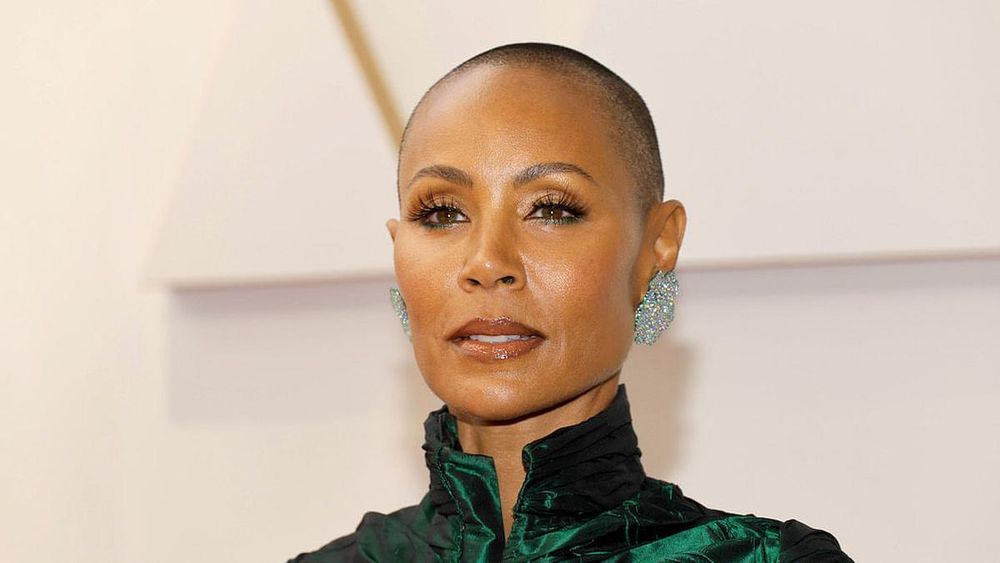What Is Alopecia Areata, The Medical Condition Behind Jada Pinkett Smith's Hair Loss?
This autoimmune disorder can happen to anyone at any age. Learn more about it, plus other reasons for sudden hair loss.

By now, you would have definitely heard of the infamous Oscars slap and seen a meme or two (or maybe, 50) about it. Quick recap: Oscars host Chris Rock joked about Jada Pinkett Smith’s baldness, and Jada’s husband Will Smith promptly responded by storming the stage to give Chris a slap. Will has since apologised, saying that his emotional outburst was triggered by the joke about Jada’s medical condition – alopecia areata.
Jada first shared about her hair loss in a May 2018 episode of Red Table Talk, an online show that she co-hosts with her daughter, Willow Smith, and her mother, Adrienne Banfield-Norris.
In response to questions about why she was wearing a turban, Jada revealed that she had been struggling with hair loss. “It was terrifying when it first started,” she said.
“I was in the shower one day and then (I noticed) just handfuls of hair in my hands… it was one of those times in my life where I was literally shaking with fear.” Jada then shared that this was the reason she decided to cut her hair, and why she has continued to sport a shorter hairdo since.
In December last year, Jada took to Instagram to share that she had opted to shave her head. Her alopecia had caused a bald spot to appear at the top of her head that was difficult to hide. She wrote: “Mama’s gonna have to take it down to the scalp so nobody thinks she got brain surgery or something. Me and this alopecia are going to be friends … period!”
So, what exactly is alopecia areata and why does it cause such sudden hair loss?
According to the American Academy of Dermatology Association (AAD), alopecia areata is an autoimmune disease where cells in one’s immune system mistakenly attack hair follicles. This can cause hair to fall out from any part of the body (yes, including your eyelashes and eyebrows), but often appears most obviously as random, patchy bald spots on the head. Though the attack causes hair loss, it rarely actually destroys the hair follicles, which means that hair can grow back.
Anyone can get alopecia areata, and the condition can manifest at any age, but certain individuals have a higher risk of developing it. This includes those with a family history of the disease, and those who have pre-existing conditions such as asthma, atopic dermatitis, thyroid disease, vitiligo or down syndrome.
The US National Alopecia Areata Foundation (NAAF) explains that there are three main types of alopecia areata. Alopecia areata refers to the condition with patchy baldness, alopecia totalis is when a patient loses all the hair on their head, and alopecia universalis is when a patient loses all the hair on both their head and body. NAAF also estimates that as many as 147 million people worldwide – roughly two per cent of the general population – are affected by alopecia areata in their lifetime.
Besides the common symptom of hair loss, some alopecia areata patients also notice changes in their nails. They may experience more brittleness or see dents and ridges in their nails.
So, should you ring up your dermatologist pronto if you notice more strands on your pillow than usual? Perhaps not. This is where it’s important to distinguish the difference between hair loss and hair shedding.
According to experts from the Mayo Clinic, it is completely normal for individuals to shed 50 to 100 strands of hair per day. This is often not noticeable as new hair is concurrently growing back day by day. When someone loses significantly more than this, it could be a sign of excessive shedding which is medically known as telogen effluvium.
Excessive shedding is temporary and can occur when one has undergone a stressful or traumatic event such as an accident, childbirth, divorce, or surgery. The hair fall often occurs a few months after the incident, and will stop once the trigger is removed and the body readjusts. It typically takes six to nine months for hair to regain its normal fullness.
However, if you’ve noticed patchy bald spots appearing on your scalp and clumps of hair dropping out with seemingly no reason, make an appointment to see your dermatologist. Alopecia areata can be diagnosed through a thorough examination and some simple tests.
There is, unfortunately, no known cure for alopecia areata. However, it’s possible for hair to grow back on its own.
The AAD says that some patients also notice cyclical patterns of hair loss and regrowth. In more severe cases, medical intervention may be needed. This can take the form of corticosteroid injections and topical applications, as well as medication to stimulate hair regrowth. For patients experiencing alopecia universalis, a dermatologist may also recommend contact immunotherapy to suppress the immune system so that it will stop attacking the hair follicles.
This article originally appeared in Her World